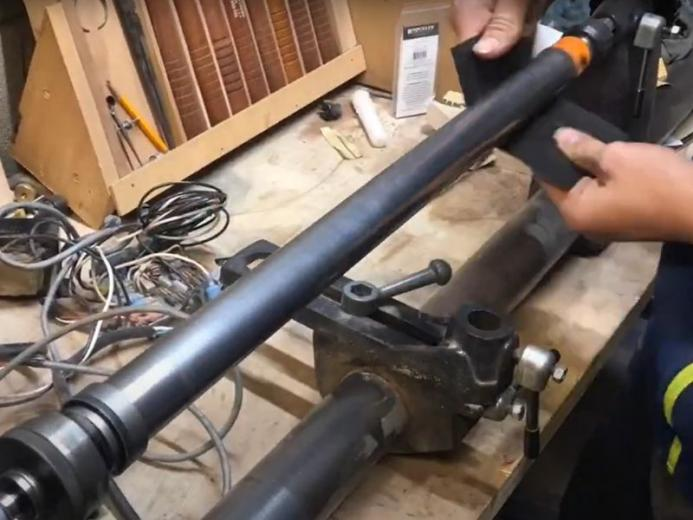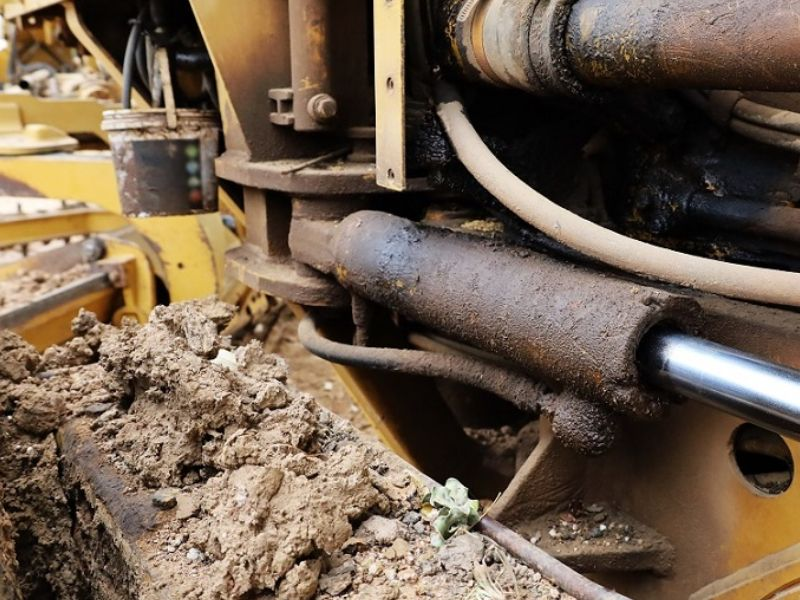Hydraulic cylinders are frequently subjected to harsh environments and high pressures, and chrome plating offers a crucial layer of protection against wear, corrosion, and other types of damage. In this article, we will explore the specifics of chrome plating hydraulic cylinders, offering valuable insights for hydraulic system maintenance and operators to ensure that these systems maintain optimal performance.

The initial stage of the chroming process for a hydraulic cylinder includes a comprehensive inspection and evaluation. This step is essential for identifying any pre-existing damage or wear, such as corrosion, pitting, or scoring on the cylinder's surface. The assessment is critical in determining whether the cylinder is suitable for chroming and informing technicians about any required repairs or preparations before the chroming process. It also enables a customized approach to the chroming, ensuring that each cylinder's specific requirements are met for the best possible outcome.
Before the actual chroming can commence, the hydraulic cylinder must undergo proper preparation. This involves removing any old chrome or coatings, typically achieved through grinding or chemical stripping. Grinding entails mechanically eliminating the old layer, which is vital for ensuring the new chrome layer adheres correctly. In some instances, chemical stripping is employed, where the cylinder is submerged in a chemical solution that dissolves the old chrome. This preparation step ensures that the cylinder's surface is properly conditioned to accept the new chrome plating.
The chroming process itself is a precise procedure that involves electroplating. The cylinder is submerged in a bath containing chromic acid and chromium. An electric current is then applied to deposit the chromium onto the surface of the cylinder. This process must be closely monitored to ensure that the chrome layer is evenly applied and meets the desired thickness and hardness. The quality of the chrome plating heavily depends on factors such as the duration of the plating and the intensity of the electric current.
Once the chrome plating is complete, the cylinder undergoes a final finishing process. This includes grinding and polishing, which are essential for achieving the desired surface smoothness and appearance. Grinding ensures that any excess chrome is removed and that the surface conforms to the required dimensions and tolerances. Polishing is then performed to further smooth the chrome plating. This not only enhances the appearance of the cylinder but also reduces friction, thereby improving the performance of the hydraulic system.
In summary, the process of chrome plating hydraulic cylinders is a detailed and systematic procedure that encompasses several critical steps, from the initial inspection to the final polishing. Each step is crucial in ensuring the quality, durability, and performance of the chrome-plated hydraulic cylinders.

After the chroming process, proper maintenance is essential to ensure the longevity and effectiveness of hydraulic cylinders. Regular inspections should be included in the maintenance routine, with a focus on identifying any signs of wear, corrosion, or damage to the chrome surface. It is also important to keep the chromed cylinders clean, as dirt and debris can accumulate and potentially lead to scratches or corrosion. Regular cleaning using appropriate cleaning agents and soft cloths can prevent these issues. Additionally, ensuring that the hydraulic system uses the correct type and grade of hydraulic fluid is crucial, as incorrect fluids can cause deterioration or reduced effectiveness of the chrome plating.
Despite the durability of chrome plating, certain issues can still occur. Common problems include cracking or peeling of the chrome layer, often due to improper application or external damage. If these issues are identified, it is crucial to address them promptly to prevent further deterioration. Another potential issue is corrosion, particularly in harsh environments. Regular inspections for signs of rust or pitting can help catch such problems early. In response to these issues, troubleshooting steps might involve light polishing to remove minor surface damage or consulting with a professional for more extensive repairs.
When it comes to maintenance and repair of chromed hydraulic cylinders, weighing the options between professional services and DIY approaches is important. While some maintenance tasks, like cleaning and basic inspections, can be handled in-house, more complex issues such as re-chroming or repairing damaged chrome layers often require professional expertise. Professionals have the necessary tools, skills, and understanding of chrome characteristics to perform detailed repairs without compromising the integrity of the cylinder. DIY attempts at major repairs can sometimes lead to more harm than good, especially without the right equipment or knowledge.
In conclusion, the maintenance and care of chromed hydraulic cylinders involve a balance of regular upkeep, prompt troubleshooting, and knowing when to seek professional assistance. Adhering to best practices for maintenance not only ensures the longevity of the chrome plating but also maintains the optimal performance of the hydraulic system.
When considering the chroming of hydraulic cylinders, it is essential to evaluate the cost-benefit ratio. This assessment involves comparing the initial investment required for chroming against the advantages it brings. These advantages include extended equipment life, reduced maintenance costs, and improved performance. Businesses and operators need to consider how these benefits can offset the upfront cost of chroming. This analysis helps in making informed decisions, ensuring that the investment in chroming is justified by the value it adds in the long run.
Several factors can influence the cost of chroming hydraulic cylinders. The size and complexity of the cylinders are primary determinants; larger cylinders or those with intricate designs typically incur higher costs. The condition of the cylinder also plays a role; cylinders requiring extensive pre-chroming preparation or repair will lead to increased costs. Additionally, the choice between different chroming techniques, such as electroplating versus thermal spray, can impact the overall cost. The quality of materials used and the required thickness of the chrome layer also contribute to the final price.
Investing in chrome plating for hydraulic cylinders can lead to significant long-term savings and a substantial return on investment (ROI). Chromed hydraulic cylinders generally have a longer lifespan, which reduces the frequency and cost of replacements. Chrome plating enhances durability and efficiency, leading to less downtime and lower maintenance costs over time. Additionally, the improved performance of chrome-plated cylinders saves energy and boosts productivity, positively impacting ROI. Companies should consider these long-term economic benefits when evaluating the cost of chrome plating.
In summary, understanding the cost-benefit ratio, recognizing the factors that influence the cost of chrome plating, and considering long-term savings and ROI are crucial aspects of the decision to chrome plate hydraulic cylinders. These considerations ensure that companies and operators make a financially sound investment, improving the efficiency and longevity of their hydraulic systems.
In summary, this comprehensive guide covers the essential aspects of chrome plating for hydraulic cylinders. We provide an in-depth look at the step-by-step process of chrome plating, discussing the different types of chrome plating, cost considerations, and post-chrome plating care and maintenance. Additionally, we offer guidance on how to choose the right chrome plating service. The importance of chrome plating extends beyond just surface treatments; it is a critical process for ensuring the efficiency and reliability of machinery and equipment across a wide range of industries. Chrome plating can significantly enhance the overall productivity and cost-effectiveness of hydraulic systems.